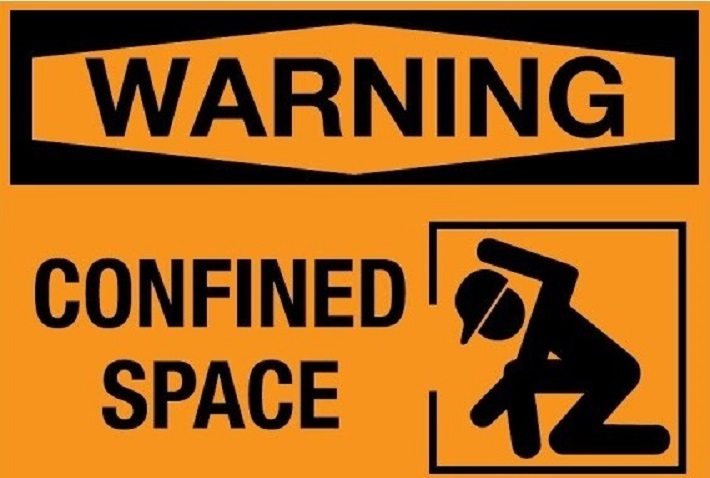This method statement covers working inside confined space for MEP and civil works for any kind of project.
Project health and safety team is responsible for implementation of below method in order to ensure that all workers are safe while working inside the confined spaces.
Safety officer / in-charge will organize and conduct necessary periodic toolbox meetings for supervisory staff and manpower, to ensure the construction team are well aware of safety requirements as per the installation activity.
Before starting the MEP work inside confined space, following tools shall be arranged in addition to other tools related to specific activity:
- Gas detector to monitor oxygen levels and other gases
- Exhaust Fans / Ventilation system
- Winch with tripod to rescue in case of emergency
- Lighting to work smoothly
- Communication channels i.e. walky-talkies etc.
Procedure to Work inside Confined Space
Ensure that all safety equipment is certified, has been inspected prior to commencement of the task and suitable for the type of confined space to be entered.
Make sure all necessary signage is provided in the working areas.
Also make sure that the working team have mobile phones for constant contact with the control room (Where required) and necessary signals are also available on site.
Assigned supervisor shall maintain an entry log for all the workers entering and leaving the confined space.
Ensure isolation of the following as required/applicable:
- sewage flow,
- electrical and/or mechanical equipment and
- chemical and/or oxygen injection.
Set up rescue equipment relevant to the confined space size and type of work.
Clear tools, equipment and material from the area around the opening and visually check the confined space for other hazards e.g. loose drop pipe, debris, snakes, rats, etc.
Ensure that the Standby Person has a mobile phone or two-way radio to receive any or make any emergency calls.
Ensure that a rescue team is present with necessary training documents/certifications.
Check that the confined space rescue winch cable is in good condition, wind the cable out and wind it back under continuous tension to ensure no bird nesting has occurred in the cable. Gloves must be worn to protect hands from broken strands.
Adequate and proper light will be provided to work inside confined space.
Gas detection procedures must be conducted before any person enters any confined space.
Securely attach the gas detector to a rope and lower into the confined space.
Test the atmosphere at multiple levels and ensure the detector goes to the farthest point of the confined space.
Place the gas detector back into the confined space for continuous monitoring as close as is practicable to the breathing zone of the worker(s) in the confined space for the duration of the entry.
Use mechanical ventilation unless the competent person has determined by risk assessment that natural ventilation will provide a safe atmosphere in the confined space.
Ventilate with fresh air, by natural, forced or mechanical means to establish and maintain a safe atmosphere and temperature.
If the confined space has sufficient openings then natural ventilation may be adequate, but in most cases mechanical ventilation will be needed.
If fans are in use, fan controls shall be clearly identified and tagged to prevent possible interference.
Check the condition of ladders, step irons etc. visually by using an intrinsically safe torch and/or mirror.
Initial entry or re-entry Gas monitoring will be done on regular basis.
Job rotation will be provided to avoid continuous working accordingly to level of exposure.
Where a fall hazard does exist the person entering a confined space must be connected to the winch cable by using the safety harness.
The operator remains attached to the cable at all times.
A second safety rescue rope should be available.
Winch only to be used in ‘rescue’ mode when a worker requires rescue or assistance in evacuating the confined space.
Under no circumstances should the person at the bottom of the confined space disconnect the D-hook from the harness and let it go until the standby person gives instruction to do so, as this may cause injury to the standby person on ground level.
After completing the work inside the confined space PTW must be closed and all persons involved should be counted.
Discover more from
Subscribe to get the latest posts sent to your email.
